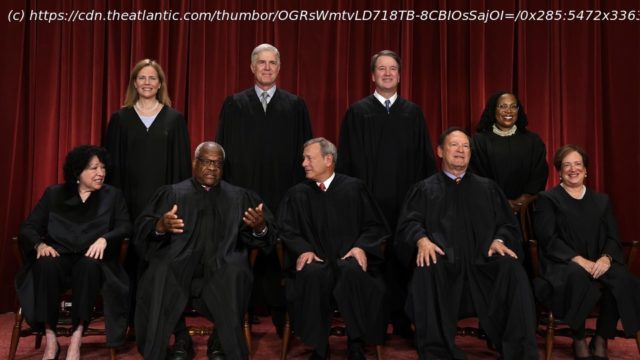The written code of conduct nods at the public pressure the Court is facing, but it can’t do much to change the justices’ behavior.
The Supreme Court’s new ethics code is a nod at the public pressure the court is facing. Beyond that, it will do little to change the justices’ behavior.
First, here are four new stories from The Atlantic:
An Unstable Structure
Don’t worry, the Supreme Court said to America yesterday. Though it may not be enforceable, the Court at least has a formal code of conduct now. The Court has been facing an onslaught of public pressure after reports that justices, particularly Clarence Thomas, had engaged in behavior that an average person could deem improper for representatives of the highest court in the land, such as receiving undisclosed gifts from wealthy conservatives. This code, the first in the Court’s history, is signed by all nine justices, and lays out “rules and principles” for the justices’ behavior. Its publication is an acknowledgment that the public is dissatisfied with the Court, but beyond that, it is more symbolic than anything else.
The 15-page document opens with a paragraph-long statement emphasizing that the rules contained within it are largely not new. Their codification is an attempt to “dispel” the “misunderstanding that the justices of this court, unlike all other jurists in this country, regard themselves as unrestricted by any ethics rules.” The code does not explicitly restrict any of the activities, such as undisclosed gifts and travel, that have been drawing attention to the justices in recent months, and its guidelines on recusals in the event of potential conflicts of interest are vague. (A progressive group noted that the document includes should 53 times and must just six.) It also doesn’t acknowledge the existence of any current or past misbehavior, Noah Rosenblum, an assistant law professor at NYU, told me. But the introduction of the code, he said, “does suggest that, in fact, the pressure is getting to the Supreme Court, which, if you believe that the Supreme Court has gone rogue, is a really useful and important thing to know.”
The Supreme Court has long operated, as the justices explain in the opening statement of the code, according to “the equivalent of common law ethics rules,” using guidelines derived from a variety of sources, such as historical practice and the code that applies to other members of the federal judiciary. The idea of the Court formalizing its ethics guidelines had been percolating for a while.






